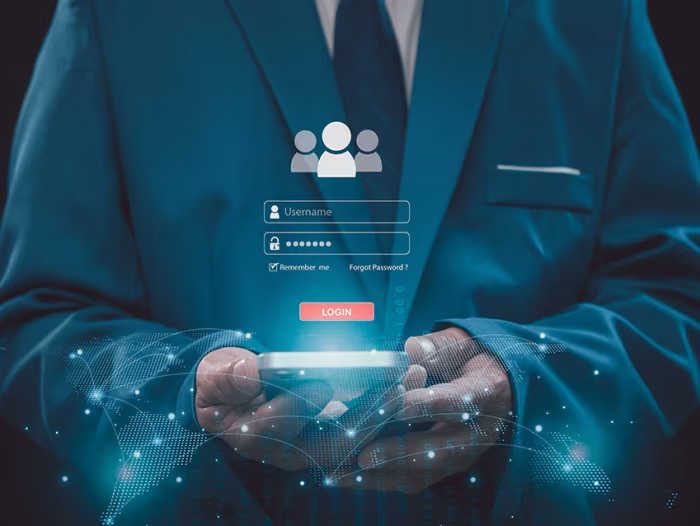Resource / Online Journal
Identity and Access Management in Healthcare: A Crucial Pillar for Data Security
The future of IAM in Healthcare will be driven by AI and ML advancements, enabling systems to detect unusual behavior and respond to security threats automatically.
Published on Sep 17, 2024

In the rapidly evolving landscape of healthcare, data security and patient privacy are becoming increasingly critical. The rising complexity of health systems, the growing adoption of digital health records, and the shift towards telemedicine have created new challenges for securing sensitive information. This is where Identity and Access Management (IAM) in healthcare plays a pivotal role.
IAM ensures that only authorized personnel have access to patient data, safeguarding both the privacy of individuals and the integrity of healthcare systems. As healthcare providers increasingly embrace digital transformation, IAM becomes essential for mitigating security risks and ensuring compliance with regulatory requirements like HIPAA (Health Insurance Portability and Accountability Act).
The Role of IAM in Healthcare
IAM in Healthcare refers to a set of policies, processes, and technologies that manage and secure digital identities and regulate access to critical information systems. The healthcare sector is one of the most data-intensive industries, handling sensitive information such as patient medical histories, billing information, and insurance details. Without a robust IAM system, healthcare providers run the risk of unauthorized access, data breaches, and misuse of personal health information.
Effective IAM solutions help healthcare organizations control who has access to specific resources, what kind of access they have, and under what circumstances they can use it. This becomes especially important in large organizations like hospitals, where numerous employees, including doctors, nurses, administrators, and third-party vendors, need access to different kinds of information at varying levels of sensitivity. IAM in Healthcare ensures that access to electronic health records (EHR), patient portals, medical devices, and other sensitive platforms is tightly regulated and monitored.
Benefits of IAM in Healthcare
- Enhanced Data Security: Protecting sensitive patient data is one of the foremost concerns in healthcare. IAM solutions provide robust authentication methods like multi-factor authentication (MFA) and single sign-on (SSO) that minimize the risk of unauthorized access. These systems not only secure access to patient information but also protect the network from external threats like cyberattacks.
- Regulatory Compliance: Compliance with regulations such as HIPAA, the General Data Protection Regulation (GDPR), and other healthcare-related standards is a major challenge for healthcare organizations. IAM helps automate compliance-related tasks by ensuring that access logs are maintained and that only authorized users can view or modify patient records. This reduces the chances of non-compliance and associated penalties.
- Improved User Experience: In healthcare settings, efficiency is critical. Healthcare providers need seamless access to patient data to make real-time decisions. IAM in Healthcare, through mechanisms like SSO, allows users to access multiple systems with a single set of credentials, reducing login times and streamlining workflow. Additionally, MFA adds a layer of security without overly complicating the access process, ensuring a balance between security and convenience.
- Risk Mitigation: By tracking and managing user access, IAM reduces the risk of internal threats, such as employees gaining access to data outside their authorized scope. This ensures that healthcare organizations can monitor who accessed what information and when. With detailed logging and auditing capabilities, IAM systems can quickly identify and respond to suspicious activities, reducing the potential impact of data breaches.
- Scalability and Flexibility: As healthcare organizations expand, so do their workforce and digital infrastructure. IAM systems are designed to scale effortlessly, managing thousands of users across multiple locations. This ensures that even as organizations grow, their security infrastructure remains intact.
Key Components of IAM in Healthcare
To fully understand the importance of IAM in Healthcare, it’s essential to break down its key components:
- Authentication: This is the process of verifying a user’s identity. In healthcare, strong authentication mechanisms like MFA, which require more than just a password, are vital for ensuring that only legitimate users can access sensitive data.
- Authorization: Once authenticated, users must have the appropriate level of access. Authorization mechanisms control what each user is allowed to do within the system. For example, a nurse may have access to patient records but might not be authorized to modify billing information.
- Role-Based Access Control (RBAC): RBAC is a security principle where users are assigned roles based on their responsibilities within the organization. Each role comes with a predefined set of access rights, minimizing the chances of accidental or malicious misuse of data. In healthcare, RBAC ensures that physicians, nurses, and administrative staff have the appropriate access levels to carry out their specific tasks.
- Auditing and Monitoring: Continuous monitoring is essential to ensure that all access is legitimate and within the boundaries of what is authorized. IAM systems provide logs of all access attempts, which can be used for compliance reporting or investigating security incidents.
- Provisioning and Deprovisioning: With a constant influx of new employees and contractors, healthcare organizations need to efficiently manage the provisioning of user accounts. IAM solutions simplify the process of assigning and removing access rights as employees join or leave the organization, ensuring that unauthorized users do not retain access to critical systems.
Challenges in Implementing IAM in Healthcare
While the benefits of IAM in Healthcare are clear, its implementation comes with challenges. One of the primary hurdles is the complexity of integrating IAM solutions with legacy systems. Many healthcare providers still rely on older technologies that may not seamlessly interface with modern IAM systems, requiring significant time and resources to ensure compatibility.
Another challenge lies in balancing security with usability. Healthcare providers need quick access to patient data, and overly complex security measures can hinder efficiency. IAM solutions must therefore be designed to offer high levels of security without slowing down workflows.
Additionally, managing the various roles within a healthcare organization can be a complex task, particularly in large hospital systems. Defining clear access policies that meet the needs of different departments and job functions requires careful planning and coordination.
Future Trends of IAM in Healthcare
Looking forward, the future of IAM in Healthcare is likely to be shaped by advancements in artificial intelligence (AI) and machine learning (ML). These technologies can enhance IAM systems by identifying unusual patterns of behavior and automatically responding to potential security threats. AI-powered IAM solutions can also help streamline the onboarding process for new employees, using predictive analytics to assign access rights based on job roles and responsibilities.
Moreover, as the healthcare industry continues to move towards cloud-based systems, IAM will become even more important for managing access to decentralized data. Cloud environments offer greater flexibility but require sophisticated IAM strategies to protect sensitive information in a highly distributed infrastructure.
Conclusion
In an industry where data security and patient privacy are paramount, IAM in Healthcare serves as a cornerstone of effective security management. By implementing robust IAM systems, healthcare organizations can ensure that only the right individuals have access to the right information at the right time. This not only helps prevent unauthorized access and data breaches but also ensures compliance with regulatory standards. As healthcare continues to evolve, IAM in Healthcare will remain a critical tool for safeguarding sensitive information while maintaining operational efficiency.
Recommended articles


Enhancing Security: The Integral Role of AI and Machine Learning in Identity Threat Detection
Take Your Identity Strategy
to the Next Level
Strengthen your organization's digital identity for a secure and worry-free tomorrow. Kickstart the journey with a complimentary consultation to explore personalized solutions.